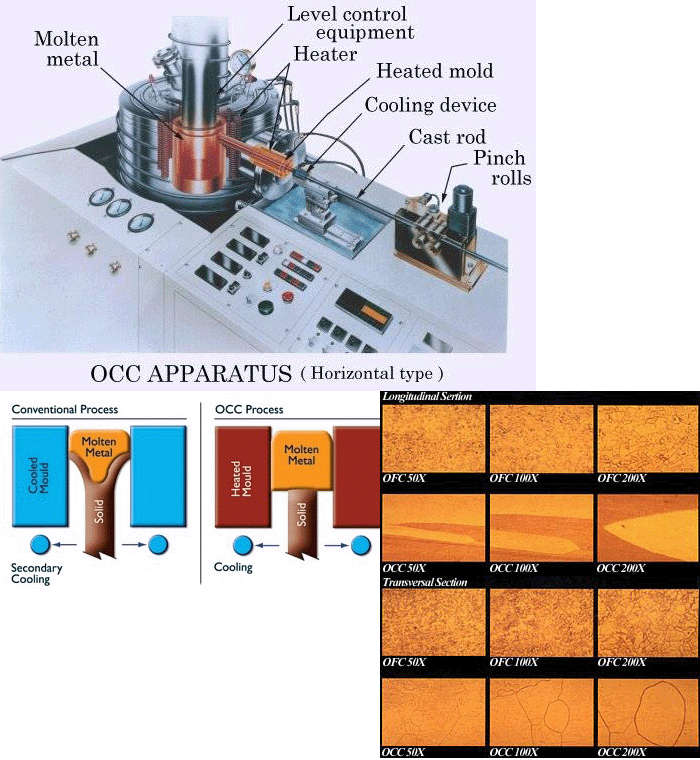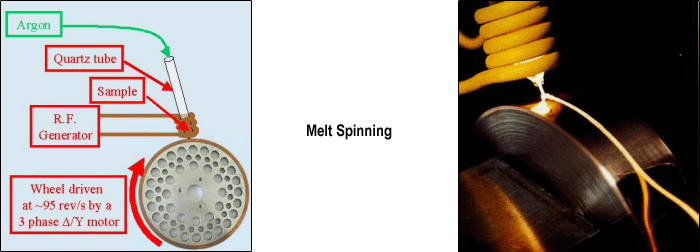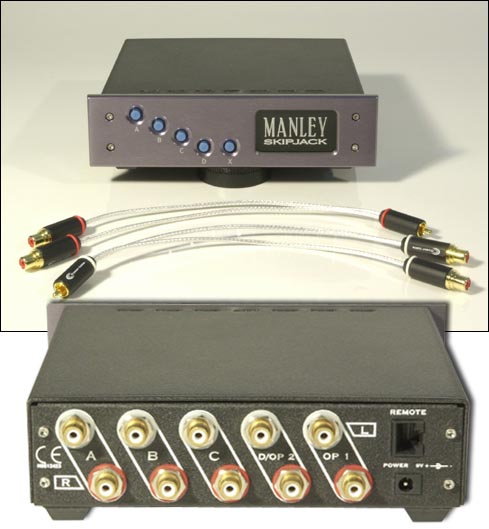|
|
|
|
|
This review page is supported in part by the sponsor whose ad is displayed above
|
|
 |
|
Hence purer forms of copper were developed. Billet production in oxygen-free environments led to the elimination of internal oxidation. The resultant oxygen-free copper or OFC had better conductivity than TPC because its copper crystals lacked the oxygen intrusions of TPC. The propagating signal now crossed fewer boundaries.
Still, OFC copper is extruded to stress its material. To alleviate this stress, OFC cables can be cryogenically treated by submerging them in liquid nitrogen at a very controlled rate of temperate descent and subsequent ascent back to room temperatures. This process causes permanent molecular compaction and is audible.
A further step of improving copper wire is annealing where the conductor, once at almost desired gauge, is reheated to just below its melting point to evaporate impurities and form longer crystalline grains. The LC-OFC long-crystal oxygen-free copper contains grains that are roughly 600 to 1000 times longer than TPC molecules.
Twenty years ago, a Japanese engineer invented the Ohno wire extrusion method to produce PCOCC or pure copper Ohno continuous cast wire. Instead of forcing molten copper billets through a cold-mold extrusion machine, they are processed in heated molds and subsequently slow-cooled to room temperature. This results in far fewer molecular boundaries than regularly processed copper extrusions. It should come as no surprise that raw PCOCC wire is much more expensive than LF-OFC or TPC.
|
|
 |
|
Due to industry demand particularly from the military, a new from of wire manufacture called melt spinning was developed. Here a molten metal or alloy is pressure-injected onto a spinning wheel in a liquid nitrogen environment. The spray of molten metal solidifies so instantly upon contact with the spinning wheel that molecular formation is prevented and a frozen liquid state achieved. Because of the construction method, extremely high-gauge low-diameter conductors become possible. Rather than round, they tend to be flatter and somewhat irregular. The resultant metals are called amorphous - formless. A good example of such exotic conductor fashioned into a production cable is Serguei Timachev's Stealth Indra. In it, silver, gold and other substances have been formed into a spun-melted frozen liquid alloy. Anyone who has ever listened to an Indra knows that ultra-thin amorphous wire is second best to no wire at all.
|
|
 |
|
The rising applications for ever-thinner conductors in the 90s gave way to new manufacturing processes. Copper's minimum gauge produced by conventional techniques is around 9-10 microns. Computer chips use 2-micron connections preferably already insulated. How do you produce such a dream wire?
The answer originates with the Russian military where a Mr. Ulitovsky refined a process originally invented by Englishman Taylor in 1924. The method comes down to placing the alloy of choice inside a glass tube and melting the alloy via induction heating. As the alloy melts, it heats the surrounding glass. The glass softens and starts to drip down just as the molten metal. At the end of the glass tube, two flows of material emit to form a glass-coated amorphous micro wire of any desired length when cooled quickly enough. The process might seem easy but controlling the melt flow requires ultra-sophisticated computing power. Thus far only two plants on the planet are able to create these micro wires for the industry. One is located in Israel, one in the Basque country of Spain.
Outside of computer chip manufacturing, this amorphous glass wire is also used as data carriers. When the wire within the glass coating is ferromagnetic, it can be turned into the successor of the CD or DVD to reveal 1s and 0s once placed inside a magnetic field. Another use of these micro wires is already in production. A cosmetics producer uses a label coded into such a micro wire to identify their products. Many countries are looking into this technology to include identifying micro wires into the paper pulp of currencies.
When metal alloys known for their benign audio characteristics are used for such micro conductors, these glassy wires could become the next generation of audio cables. Even though adding connectors to these micro wires is very difficult -- remember, they're less than 1/3 of a blond hair in diameter -- this type of amorphous conductor can carry a surprising amount of current without melting. Glass is a strange substance. When ultra thin as in the coating of a micro wire, it has extraordinary electrical characteristics and is very supple. Even at extreme bends, it won't break. By 2007, we should see many new cables coming to the audio market that are based on glassy wires.
Enough theory now. To get a better insight into the various solutions to the interconnect challenge, we asked a number of suppliers for samples. Naturally, each manufacturer has his personal vision and solution to the problems outlined above. All cables were burned in for a generous period so we could get used to their sound within the context of our equipment.
|
|
 |
Ten pairs of cables arrived in our listening room, a completely random selection determined by availability. We used a Manley Labs Skipjack to perform A/B/X comparisons as accurately as humanly possible. The Manley Skipjack is a cable switcher managed by a microprocessor and a remote control to make for seamless -- and even truly blind -- switching.
The ten pairs of interconnects roughly divided into three price classes: 300 to 500 euros; 1000 to 1500 euros; and 1500 to 6000 euro for 1-meter pairs respectively. At the moment, a euro equates to about $1.20. Independent from cable construction, our intent was to evaluate the cables based on price. During the test period, it became obvious that cables, just like apples and oranges, cannot be compared that way.
|
|
| To confuse matters further, it appears that burned-in cables aren't burned-in permanently. Removal from a system and |
|
subsequent reinsertion at a later point requires additional settling times. Any major disruption like rerouting bends, removal and reconnects cause audible differences. It should be self-evident as well that any comparison is valid only for the system in which the comparison was conducted.
|
|
|
 |
 |
|
|
|
 |
|
|
|
|
|
|
|
|